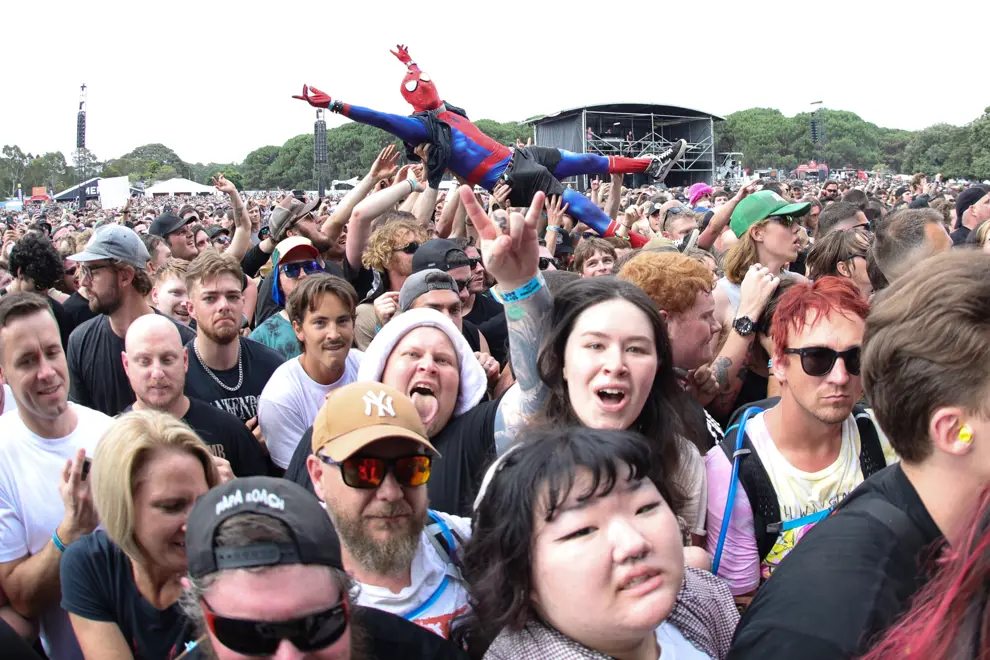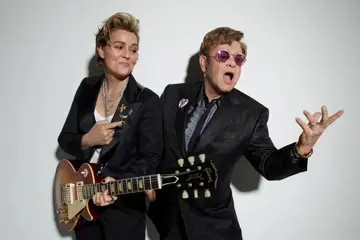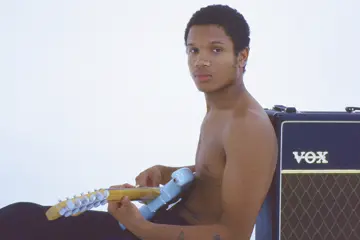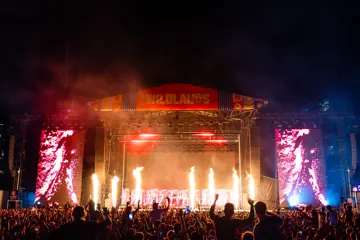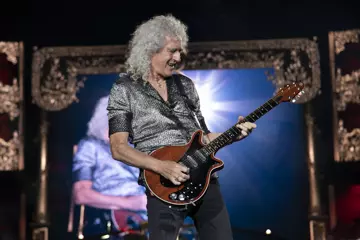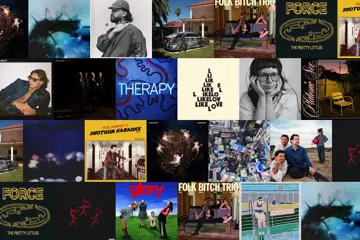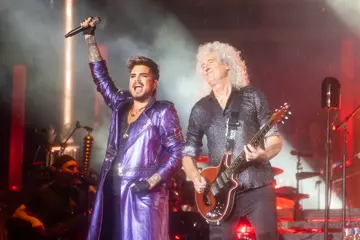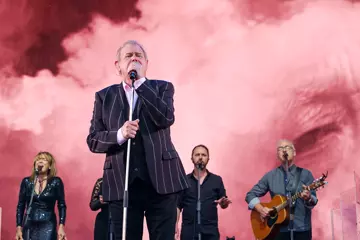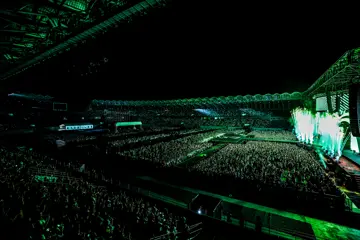Ticket prices continue to escalate for music festivals and arena & stadium shows.
While it is clearly a struggle for fans as household budgets shrink, last week’s fourth Ticketing State Of Play: Australia from Tixel and Bolster showed 72% of its respondents will ignore higher-than-expected prices and go.
This is by opting for cheaper tickets or using Buy Now, Pay Later options. Independent figures from Afterpay show it’s increasingly used for event tickets.
For instance, it was tapped by 41,170 of the 349,075 people who attended Luke Combs’ Australian tour earlier this year.
So did 33,902 of 63,099 Katy Perry fans, and 27,711 of the 134,422 Billie Eilish followers.
Promoters also notice another trend – once punters get into festival sites and concert venues, they do dip into their wallets.
“People are definitely spending more,” reports Chris O’Brien, General Manager of Destroy All Lines. “Food and drink sales are very strong.
“Merchandising is going through the roof. Fans are reaching into their pockets for it, and they don’t mind queuing.”
Destroy All Lines festivals are going through a heavy kiss-the-sky period. Their sales and revenue turnover as seen the company currently ranked as fourth highest Australian promoter, and top performing independent promoter.
Good Things in December draws 100,000, and is expected to repeat that this year with Tool, Weezer and Garbage headlining.
This year’s Knotfest was one of the biggest yet, with 90,000 through the gates, and a large sector from overseas.
The 11-date inaugural Park Waves next year is tipped to draw 100,000 to 120,000 and has, within weeks of sale, exhausted its VIP tickets.
Country Music
The country music boom and Gen Z leaping so excitedly on the bandwagon sees their spending escalate. Deni Ute Muster which stages on October 3 and 4 in regional NSW, has also been on the receiving end of a cash-splash.
“We’ve definitely seen a shift in audience spending patterns since 2023,” confirms General Manager Vicky Lowry.
Don't miss a beat with our FREE daily newsletter
“Along with attendance numbers increasing in 2024 we also saw an increase in bar sales (28%) and merchandise bar sales (25%), showing people are spending more per head once they’re on site.
“After softer results in 2023, the rebound has been strong and with our first-ever sellout expected this year, it highlights renewed confidence in the festival experience received at the Deni Ute Muster.”
Queensland’s Gympie Music Muster whose attendance exceeded pre-COVID levels this year with 60,000 visitors August 28—31 at Amamoor Creek State Forest, 180km north of Brisbane, also saw big on-site outlays.
Camping sites were swept up in record-breaking time. The local general store reported spending by patrons was not just over days but weeks.
In recent years, the event injected up to $17 million ($6.78 million ten years ago) directly into the economy. “The economic boost generated by the Muster flows directly through local motels, cafes, pubs, and shops,” said Member for Gympie Tony Perrett.
In more on-site outlay $17,000 was raised through the Maton guitar auction for charity partner River’s Gift, and nearly $10,000 via the Star Wall S for lives lost from Sudden Infant Death Syndrome or SIDS.
Music venue Den Divine benefited from the estimated $24 million injected into local businesses when Blues On Broadbeach 2025 attendance rose to a rough estimate of 160,000 in autumn.
The club’s Daniel Eagles said it was packed out in the day time as well. “To have the foot traffic coming through Broadbeach is absolutely incredible, it has never been this busy.”
Merchandise
On average, a music fan spends $61 on merchandising, up 7% from 2024. But buying food and drinks is down 9% to $31 a head.
This is according to the 2025 Fan Spending Report: What Concertgoers Are Buying Most by global live event platform atVenu.
It says 22% of the audience buys merch. “In 2025, the average fan is spending $64 pre-tax on merchandise—up 7% from 2024.
“Spend per head continues to scale with event size, ranging from $45 at smaller shows to $90+ at high-capacity events.”
The report went on to say, “Fans in 2025 are buying more than ever—averaging 2.1 items per purchase, up from 1.7 in 2024.
“The percentage of fans buying 2–3 items jumped to 33%, while single-item purchases dropped to 52%.”
Accessory sales are climbing across genres, especially for K-Pop, pop, metal and EDM. This year demand for sweatshirts was up, but vinyl and longsleeves dipped.
K-Pop disciples, long the biggest spenders, are shelling out even more. This is up 61% to $48.32 per head this year.
EDM had a 52% increase from 2024, while country, funk, and punk all were up 31%. Heavy metal and hard rock were down 30% and 23%, respectively.
Pop dipped a slight 5%. The biggest fall was Latin from nearly $30 a head to just $7.46.
The global merchandise market is forecast to rise to become a $16.3 billion industry by 2030.
Encouraging
The music industry has ways at encouraging punters to spend.
For Destroy All Lines’ Chris O’Brien, it’s about providing a greater variety of food and drink offerings. “People have allergies or are vegetarians. So we market that up front so they’re comfortable at the site they’re going to get what they want.
“With merchandising, we get as many ranges as possible, and we make sure the area is well lit up.”
Larger venues are using technology to trigger demand with quicker service. Up to 40% of potential buyers of food, drinks and merchandise walk away if the queue is too long.
Promoters and venue operators agree that trying to rush through long lines means that fans don’t get the chance to see all what’s on display, and hence likely not to buy multiple items.
Global company Boxbar, which operates 400 terminals in nine countries including Australia after opening in mid-2023, offers the world’s first automated, self-serve drinks option.
It delivers all kinds of beverages including beer, cider, cocktails, spirits, soft drinks and wine cold from a single terminal.
According to CEO and co-founder Reshad Hossenally “We’re 360% faster (than a traditional bar), serving two drinks in 30 seconds. We’ve seen first hand how much this can affect queuing times, on average dropping by over 70%.”
More venues offer food and drinks brought to the customer’s seat, after 51% indicate they don’t want to miss a moment of a concert or sports event, and 30% say it improves the fan experience.
An option is staffers walking through the crowd and selling drinks stored in giant backpacks.
A IQ magazine feature on how stadiums increase on-site spending reported that more self-service merch stands are being introduced in UK arenas.
Younger, more wide-eyed audiences are also encouraged to come earlier to the show, as the more time they spend in the venue also means a greater inclination to buy things on impulse.
Collette Ingalls, Director of Marketing for atVenu, which works with 800 venues around the world on ways to spike up merchandise sales, told IQ, “Our goal is to help fans get their merchandise for the event they are attending more quickly and easily, along with providing venues with insights into their operations to create the best experience possible for fans.”
By adding in mobile ordering, she said they can increase sales by between 7% and 15%, as well as reduce queues at merchandise stands.
In Australia, Marvel Stadium in Melbourne, Adelaide Oval and Optus Stadium in Perth led the introduction of self-serve checkouts for food and drinks use.
Optus Stadium CEO Mike McKenna said of the AI-powered computer vision technology which recognises and rings up products from any angle, “Fans grab a snack or drink and pay in seconds which will mean they can get back to their seats faster than with a traditional cashier set-up.”
In the US, more advanced AI technology slashed waiting time from 30 minutes to two minutes.
To get patrons to come to the venue to eat before and after the event, stadiums have also amped up quality and range of food, bringing in gourmet cooks. Adelaide Oval, in one example, has in the last two years introduced 40 new food items and ten new beverage choices.
This piece of content has been assisted by the Australian Government through Music Australia and Creative Australia, its arts funding and advisory body


